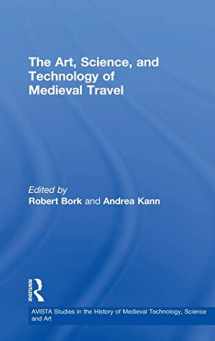
The Art, Science, and Technology of Medieval Travel (AVISTA Studies in the History of Medieval Technology, Science and Art)
Book details
Summary
Description
This sixth volume in the AVISTA series considers "The Art, Science, and Technology of Medieval Travel". In recent years, scholarship has increasingly emphasized the importance of travel and intercultural exchange in the Middle Ages. The notable medieval phenomena of pilgrimage and crusade obviously involved travel, while the growth of international commerce contributed decisively to the emergence of Europe as a major force in the world. Medievalists in all fields thus have good reason to consider this issue. The contributors here explore medieval travel from a variety of interdisciplinary perspectives, placing the physical practice of transportation into the larger context of medieval thought about the world and its meaning. The four sections move in focus from the practical to the theoretical, and back. The first section deals with medieval vehicles and logistics, considering Carolingian military planning, Venetian ship design, the origin of the coach, and trade-offs between land and water transport. In the second section, the authors look at ways in which medieval artists responded to travel in creating city gates, representations of earthly travel, and devotional images based on the idea of spiritual pilgrimage. The next papers deal with maps and their meanings, opening with an argument for the importance of Platonic symbolism for medieval mapmakers, followed by studies on the Hereford Mappa Mundi, the Gough Map, and Petrarch's travel guide to the Holy Land. The final section discusses the history of navigational instruments in the Middle Ages. Together, these papers constitute important explorations of how the practical and theoretical concerns of medieval travellers intersected, from the early Middle Ages to the dawn of the Renaissance.


We would LOVE it if you could help us and other readers by reviewing the book
Book review



